Whether you’re a pro in the kitchen or just starting, one of the most important decisions you need to make is the type of knife to buy and use. We’ll help you make the right choice between forged vs stamped knives for a more rewarding meal prep experience.
A forged knife is handcrafted from a single steel bar that goes through heat treatment then pounded to achieve the desired shape. The result is a stronger and more durable knife.
A stamped knife is created when a machine cuts out a blade from a sheet of steel then undergoes tempering. It usually has a thinner frame making it more lightweight.
Let’s dive into the characteristics of each process and go deeper into the differences between the two types of knives. At the end of this article, you’ll be able to make the best decision for a fun and efficient time in the kitchen.
Table of contents
What is the knife manufacturing process?
The terms forged and stamped describe the process of how the knife’s blades are made. The manufacturing process affects the weight, usability, edge retention, sharpness, hardness, and ultimately, the price of the knife.
Generally, a knife goes through shaping, grinding, heat treating, and sharpening.
What does forged knife mean?
A forged knife is made from a piece of steel then heated and hammered to achieve the desired shape. This process called “forging” rearranges and compresses the molecules making the blades stronger and harder. It also results in a blade that can stay sharp longer.
The process involves crafting the knives by hand, making them labor-intensive and complex. The traditional, artisanal way also takes longer than modern forging but the result is a knife that can withstand the test of time.
Knife forging process
The following are steps that are involved in the knife forging process.
Step 1: Shaping
Shaping begins with the cutting of steel bars to the desired length and is heated to 75% of their melting temperature. Usually, blacksmiths wait for the steel to become bright yellow. This means that it is already at the temperature that’s perfect for molding, hammering, and shaping.
Step 2: Heat treating
A strong and hard finished product is a result of heating the knife steel and quickly cooling it. This process is called hardening and quenching.
After the heat treated blade cools to room temperature, tempering follows. This process of heating the blade for two hours at a temperature that ranges from 347 to 662 degrees Fahrenheit, reduces brittleness and creates a good balance between toughness, grindability, and retention of sharpness.
Step 3: Grinding
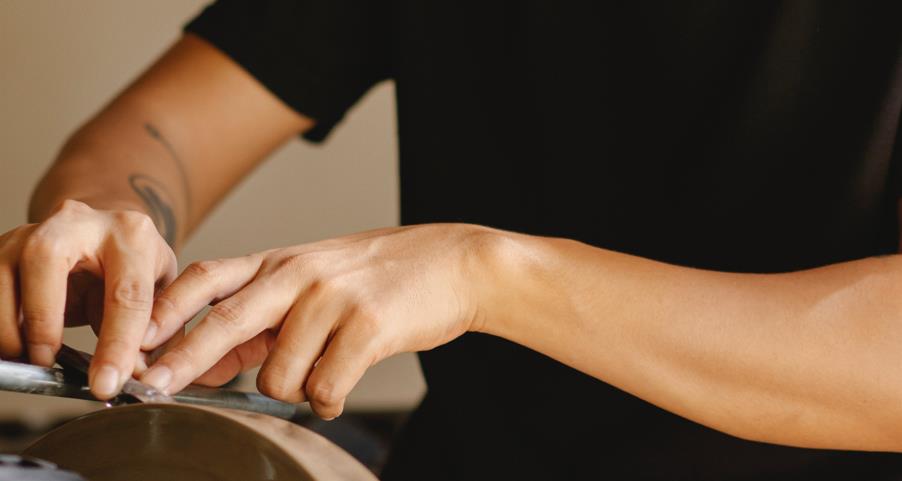
The knife then goes through manual or machine grinding using sandpaper grit that increases in fineness after each round. This part of the process makes the knife’s edge sharp.
The next step is the attachment of the handle. If the design includes a tang and a bolster, this is the stage where finishing for these parts takes place.
Step 4: Sharpening
Before sharpening to achieve the desired angle, the knife goes through cleaning, polishing, and inspecting.
Upsides of forged knives
The complex and intricate process that forged knives go through is all worth the effort and results in the following upsides:
- Forged knives are durable and have longer edge retention. The forging process shapes the blade down to the molecular level which makes it exceptionally strong.
- In some designs, the tang and the blade are crafted from one continuous piece of steel which results in a well-balanced and sturdy piece.
- Some manufactures include the creation of bolsters in their knives. A bolster is a thick band that connects the blade to the handle. It helps protect the user’s fingers and helps with control and balance.
- Forged knives won’t twist or bend when held against sharpening steel or whetstone. Its lack of flexibility makes it easier to sharpen.
- It’s heavier and thicker which helps in creating precise cuts on hard and hefty ingredients.
Drawbacks of a forged knife
The forged knife’s high price is the only notable drawback. But, its quality and longevity are always worth the investment. It’s a kitchen knife that will last a lifetime.
Handpicked for you
True cutting power in the palm of your hand
What are stamped knives?
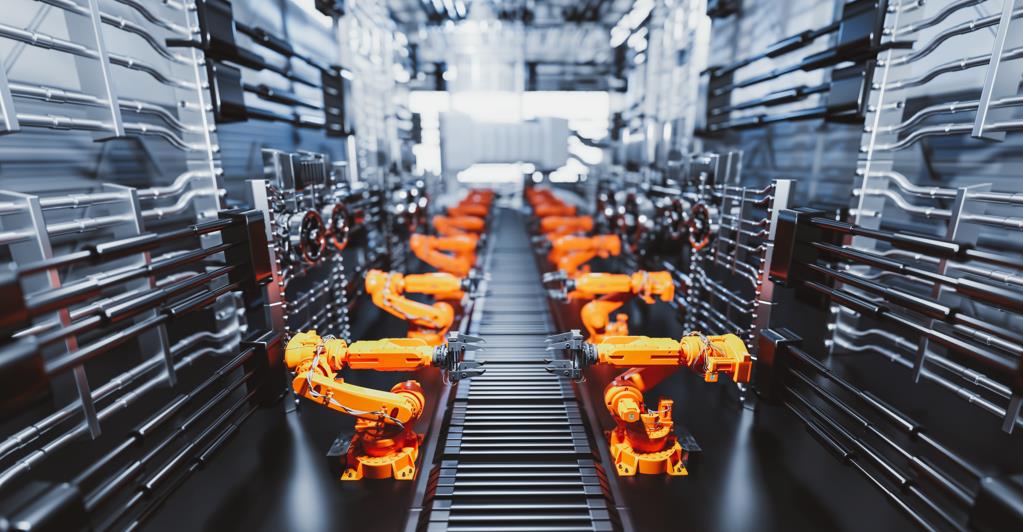
Stamped knives are cut out from a large sheet of steel. It’s like using a cookie cutter to shape cookies from the flattened dough.
The stamping process makes it easier and more economical to mass-produce kitchen knives which results in a more affordable option for commercial kitchens.
Here’s a video that shows how a stamped knife is made.
Knife stamping process
The following are the steps in making stamped knives.
Step 1: Shaping
A cutter is used to cut out blades from a large sheet of metal.
Step 2: Heat Treating
The knives go through tempering and hardening to increase their durability.
Step 3: Honing
The blades are honed to align their edges. It then goes through sharpening which involves a multi-step grinding process.
Step 4: Finishing
The knives are cleaned, polished, and inspected.
Upsides of stamped knives
- Stamped knives are lighter than forged knives so it is best for people who will use them for longer periods such as meal preparations in commercial kitchens. There’s a lower chance of fatigue or finger numbness even after prolonged use.
- It makes slicing and filleting delicate food, such as fish, easier due to its thin blade.
- Stamped knives are less expensive than knives with forged blades.
Downsides of stamped knives
- The thin and flexible blade is harder to sharpen. It is also more likely to bend and slip which could reduce precision.
- When cutting through hard surfaces, the thinner and more flexible blade may bend and slip, reducing precision.
Differences between stamped and forged knives
Now that you already know the features of the two types of knives, we’ll go deeper into their differences.
Price
Since forged knives require more material and go through a more complex manufacturing process, they are more expensive than stamped knives.
Stamped knives are thinner and go through a simpler process so it is more affordable. Other factors such as where it is made, the brand, the construction, and the type of metal contribute to the price of the knives.
To give you an idea, the price of forged 8-inch chef’s knives usually range from $70.00 to $500.00 For stamped knives, you will need to shell out $13.00 to $50.00
Blade quality
A forged knife’s blade is thicker than the blade of a stamped knife. Also, for forged knives, the blades are usually thicker on the spine and the handle tapers towards the endpoint. On the other hand, the blade of a stamped knife is the same throughout.
Forged knives are stiff and less flexible, which makes them more appropriate for chopping meat and vegetables. For delicate knife work such as filleting or deboning, a stamped knife is preferred due to its flexibility.
Forged and stamped knives can be equally sharp. The angle on the edge of the blade dictates a knife’s sharpness. Smaller angles result in sharper edges.
For slicing and chopping, a forged knife is the better option since it gets thicker towards the handle. However, for precise slices or cuts needed for meals such as sushi or sashimi, stamped knives would do a better job.
Sharpening
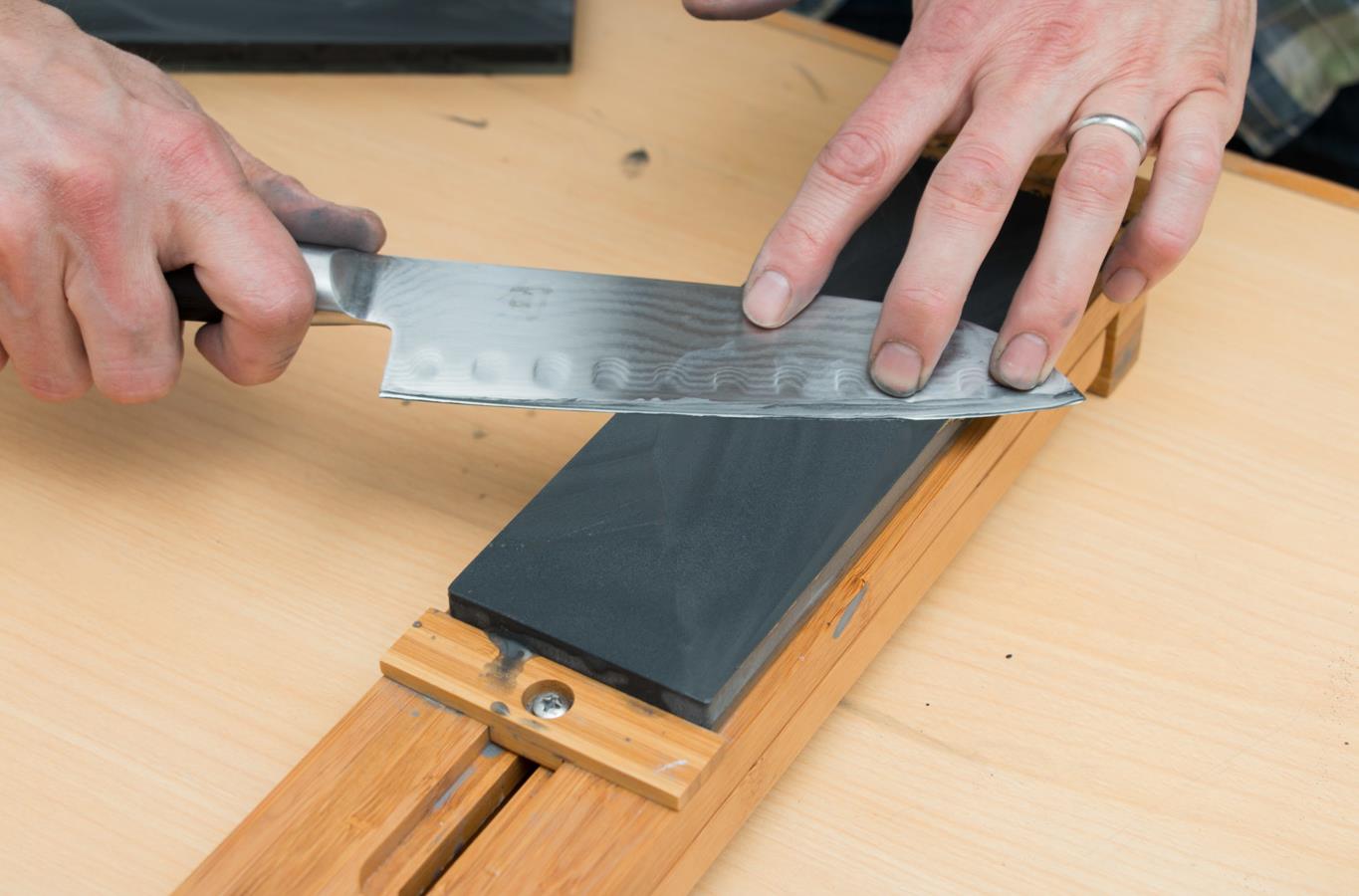
A chef’s knife would need sharpening at some point. When that time comes, you would find that a forged knife will be easier to sharpen due to its rigid blade.
On the other hand, sharpening stamped knives would be more of a challenge because their blades are more flexible and can bend during the process.
Using an electric sharpener for both forged and stamped knives can make sharpening easier.
Design
Bolster
The mound of metal that sits between the handle and the blade is called a bolster. It makes the knife stronger and protects the user’s fingers from slipping.
Most forged knives have bolsters. The available options are full, half, and semi-bolsters.
Knives with full bolsters offer an extra layer of protection since they are longer and thicker. However, sharpening the entire edge would be impossible since the steel is too thick near the handle.
The edges of half or semi-bolsters can be sharpened easily since they are shorter. The only disadvantage is that it can’t offer as much protection as the full ones.
Stamped knives don’t have bolsters since the manufacturing process involves cutting the blade from a large sheet of steel.
Tang
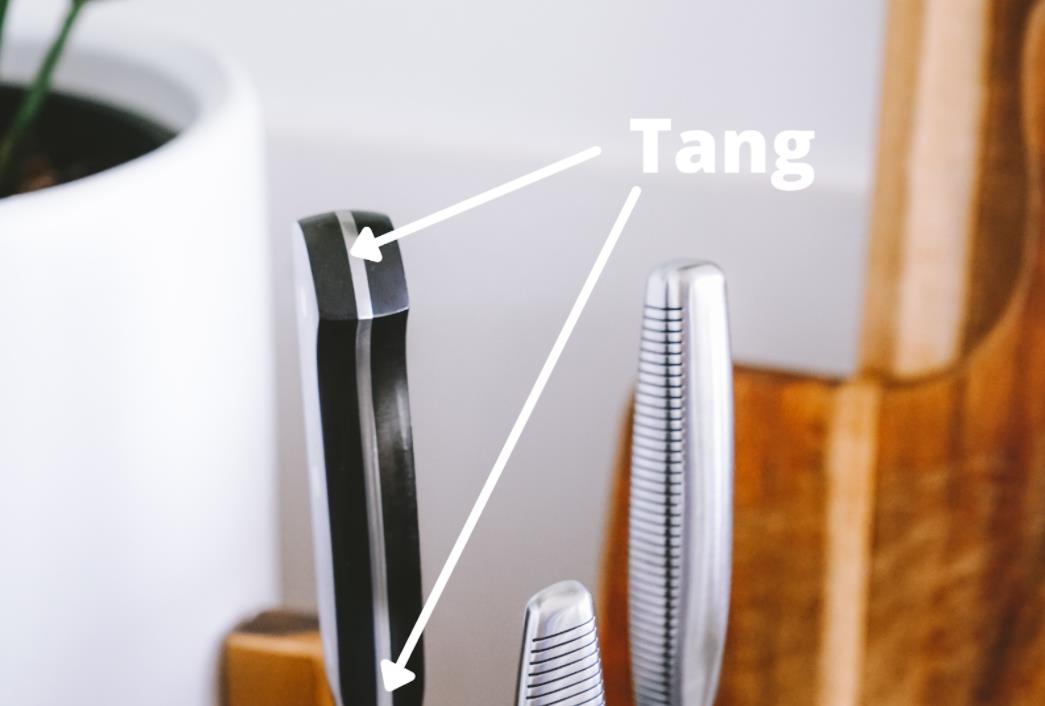
The tang is a part of the blade that stretches until the handle. Both forged and stamped knife designs can feature a full tang handle but it is more common in forged knives.
If a blade extends through the whole knife, it is classified as a full tang. If it only reaches the middle of the handle, it is called a half-tang. For a partial tang design, the blade occupies only a small part of the handle.
Forged knives are usually designed with a full tang while a partial tang can be seen on stamped knives.
The tang contributes to the balance and strength of a knife which in turn, affects the user’s performance and the outcome of the chopped or sliced food.
A knife with a full tang is also safer to use since it would be difficult for the blade to be detached from the handle.
Weight
There are several design elements that contribute to the weight of a knife such as the handle’s material, the blade’s thickness, and the presence of a tang or bolster.
The weight of a knife dictates its ease of use. It would be best to find a knife that is heavy or light enough to accomplish the cutting task easily.
For example, a heavier forged knife is best for cutting thick cuts of meat or hard produce such as pineapples or squash. A lighter stamped knife, on the other hand, works best on softer food such as tomatoes, onions, and mushrooms.
Edge Retention
Edge retention refers to the knife’s ability to retain its edge over time. A forged knife has a harder and tougher blade than a stamped knife which gives it better edge retention. Its blade is due to the forging process that involves tempering and heating under extreme temperatures.
Since stamped knives have poorer edge retention, they need to be sharpened more often.
Forged knives vs. stamped knives: summary
The following table summarizes the differences between forged vs stamped cutlery.
| Feature | Forged | Stamped |
| price | more expensive | less expensive |
| thickness | thick | thin |
| flexibility | less flexible | more flexible |
| sharpening | easier | more challenging |
| bolster | full, half and semi-bolsters | no bolsters |
| tang | full, partial, and half | full, partial, and half |
| weight | heavier | lighter |
| edge retention | more edge retention | less edge retention |
What are the similarities of forged and stamped knives?
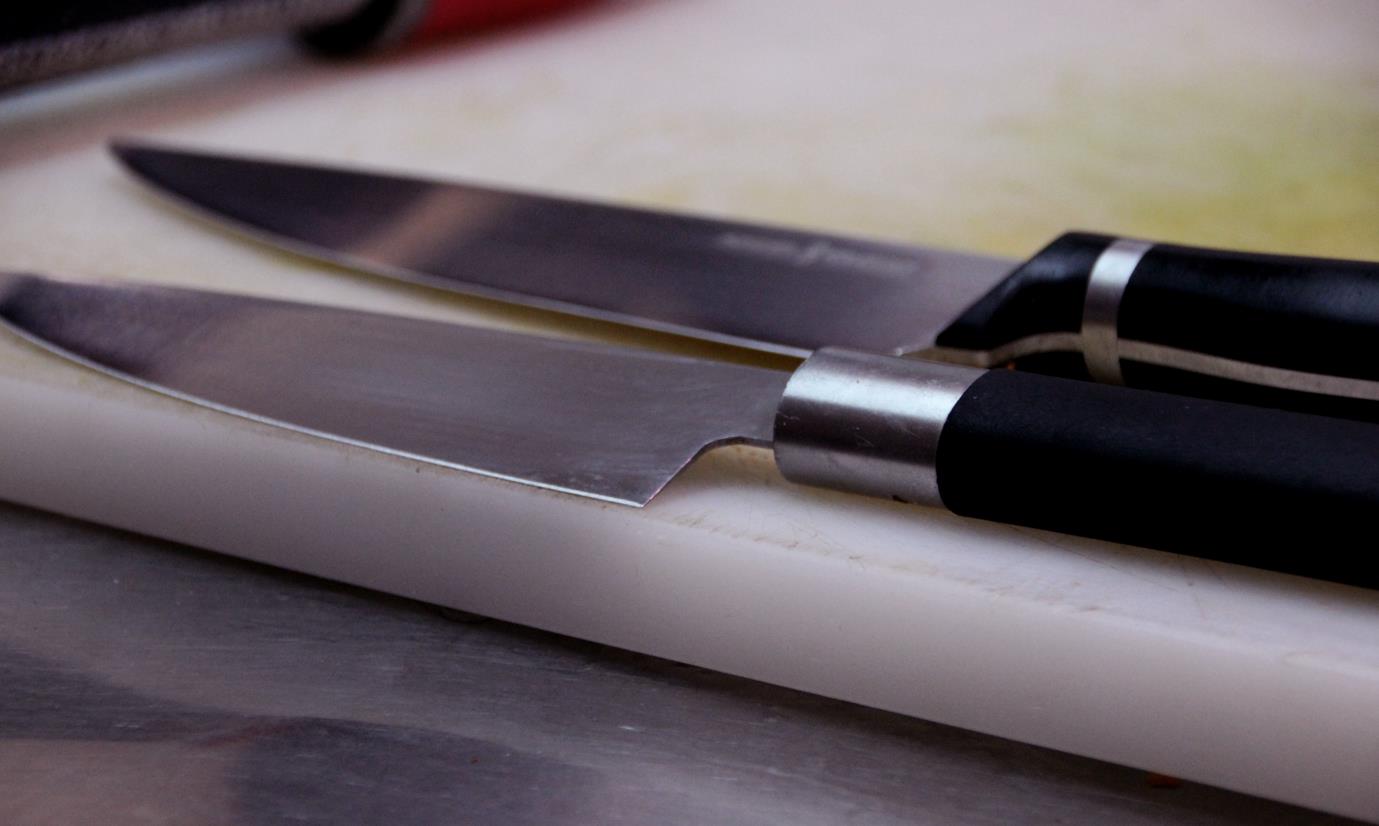
There may be several differences between the two types of knives but they also share the following similarities.
- Both knives can be equally sharp.
- Their designs can include a full, partial, or half tang.
- An electric sharpener can be used on both knives.
- The manufacturing process of both forged and stamped knives involve heating, tempering, grinding, and polishing.
How to choose between forged and stamped knives?
Now that you have armed yourself with vital information about both types of knives, the next step is finding which one is right for you.
Generally, it all boils down to choosing the right kind of knife for the cutting task. Due to its heft and thick blades, a forged knife is best used for cutting, chopping, or slicing chunks of beef, lamb, and poultry. It will also help in efficiently chopping hard vegetables such as winter squash, carrots, and sweet potatoes.
On the other hand, a stamped knife with its thin and flexible blade is perfect for delicate ingredients. It can produce precise cuts of fish for sushi and sashimi. It can also slice soft fruits and vegetables like mushrooms, cherry tomatoes, and berries without bruising them.
Stamped knives are lighter so they can be used for a longer time in the kitchen. They have now become a commonly used tool in commercial kitchens because they reduce the risk of fatigue and finger numbness.
Bottom line
Each type of knife has its own unique contribution to the success of any meal. It would be best to invest in both types for a more enjoyable and efficient time in the kitchen.
As world-famous chef Eric Ripert would say, “Having sharp, great knives will enable you to cook very precisely.” And both knives boast of being sharp and have their own share of greatness, so go ahead and feel free to get both.
Start your culinary journey or enhance your present kitchen knife collection by shopping for high-quality forged kitchen knives here.












